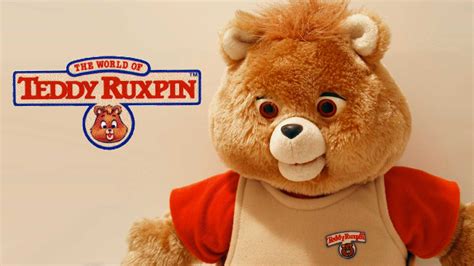Teddy Ruxpin - The Bear Who Reads!

As a child of the 1980's there are many toys that are near and dear to my heart. I remember watching Saturday morning cartoons and seeing something that I had to have... something that would bring reading to life. With a toy like this, how could my parents refuse. They did not, and in fact, I was able to talk them into buying not only Teddy Ruxpin, but a lot of the books and the sidekick Gummy. These were more than just toys to me, they were my first reading friends.
1. Who created the ad? The ad for Teddy Ruxpin was created by the World of Wonders. World of Wonder was a company that specialized in electronic toys. At that time, in the early 1980’s, Teddy Ruxpin and Lazer Tag were its primary products. When the World of Wonders company went bankrupt in 1988, it was sold to Hasbro.
2. What creative techniques were used? One of the main techniques used in this ad was appealing to emotions. Looking back on it, and even when watching it at the time, I remember feeling empathy for the main character. It took a real-world scenario and showed how the product could turn boredom to excitement. In the beginning of the commercial it showed a boy feeling nervous about sharing his toy with the class. Some of his classmates were making fun of it, as well as yawning and laughing. All that changed when Teddy began speaking. Suddenly, it became a cool toy, and the classmates were excited about it. As a shy person, I could relate to how this boy felt, and celebrate his eventual acceptance.
How might different people interpret this message differently than me? I remember watching this commercial and thinking that I had never seen anything like this before. It was the first way I remember seeing electronics being used in association with reading. It was the beginning of a new era of electronic toys and the markets it could infiltrate. With the setting of the ad in a school, the ad could be interpreted as a learning toy in addition to something for entertainment. Video games were in a dip, after Atari’s initial success, and before Nintendo took off, and this was a way to entertain kids, in an educational format with electronics.
3. What viewpoints or world views are included or left out of this message? The classroom was represented in a typical way. The teacher was at front, and students all sat in rows. The teacher was a stereotypical white woman, who supported her shy student. I was happy to see that the classroom included two African Americans and had representation of boys and girls. They were all dressed nicely. It would have been nice to show more diversity of cultures.
4. Why is this message being sent? The company World of Wonder was a great influencer of electronic toys for kids. Teddy Ruxpin was one of their first big products and a huge hit. It ushered in more toys like it. It was important because it showed that reading could be fun and engaging, and also enhanced with electronics.